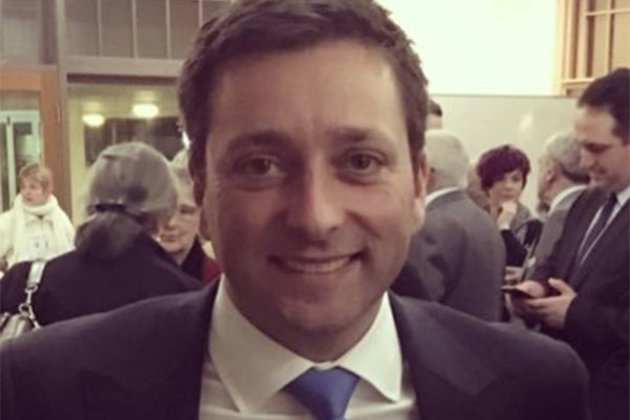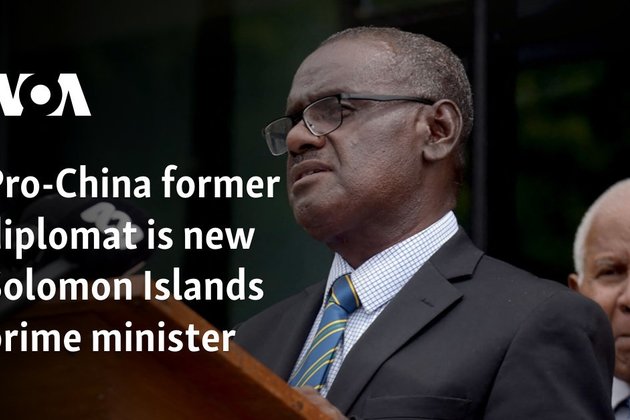2LT International News
Pell case hiatus to test Australian High Court
Feb 27, 2020
The Crown has been check-mated by the hiatus in the George Pell case. According to the prosecution the complainant was assaulted during an interval of five to six minutes in a normally busy sacristy. It can be shown, however, that no opportunity existed for such an assault to occur undetected. The Crown suggest that a hiatus arose within the hive of activity. But a breakdown of the cases shows that this is impossible.
For either the hiatus was early, that is, before the processing altar servers returned to the sacristy or else it was late, that is, just after the servers returned. It can’t have been early for the room was locked, and besides, the errant choristers could not have got to the room before the servers. It can’t have been late for the court heard evidence that the activity of clearing up the sacristy began immediately, and besides, concelebrating priests were also part of the procession and when they arrived at the sacristy they stayed to chat.
The game is over.
Along with others, I have argued this point in fine detail over many pages.i However, in this paper I shall spell out the unprincipled way in which the prosecutors tried to have it both ways. Sometimes they painted a picture of an early hiatus; sometimes they painted a late hiatus. It’s the lack of principle that I wish to spell out.
In what follows, then, I shall try locate the contentions, first for an early, and then for a late hiatus. Individually, these arguments cannot be sustained but I shall not dwell on the point here as elsewhere I have already attended to the issues with some care. What I shall do, though, is show just how unprincipled the case against Pell is, indeed, sneaky. Let’s begin with the early hiatus.
For at first, the idea that there was “this hiatus, this gap” in which the offending would take place related to the first five or six minutes after Mass. That the Crown were operating on this basis can be shown in many ways. In the first place, the complainant gave evidence that he was assaulted immediately after Mass. This is utterly at variance with the idea that he was processing for around five minutes, but nevertheless, this is what the court heard. This point was explicitly put to him by Robert Richter, and he agreed that this had been his position (420). Secondly, this was the case to which Bret Walker responded in his June hearingii as the majority are clearly aware (124). Thirdly, an early hiatus is indicated by the contested issue as to whether or not Pell had an effective alibi in Portelli who claimed that he was with Pell immediately after Mass, meeting and greeting at the West Door. The very fact that this point is so awkward indicates clearly enough what the Crown were thinking.
Fourthly, the Crown try to make out that the evidence of McGlone is supportive.iii For this altar server remembered returning to the sacristy when it was already unlocked, and so apparently, the Crown suggest that the room had been open for some time. Now, whatever the majority imply (see 294) there is nothing in this evidence to contradict the sacristan who told the court that after a period of decorum he would wait, take up the lectionary, and then unlock the sacristy. For the time of that decorum is concurrent with the time of processing, and besides, McGlone can recall the thurifer having entered the sacristy which makes sense as the thurifer would be at the front of the procession (525). But our point, simply, is that this is seized upon as proof of the possibility of an early hiatus. Generally speaking, the Crown urged the jury to reject McGlone’s evidence, but:
747 According to McGlone, the altar servers would enter the Priests’ Sacristy, which was already unlocked at that stage, bow to the crucifix, exit the sacristy, and commence their duties as altar servers. It followed, so Mr Gibson submitted, that shortly after the conclusion of Mass, the Priests’ Sacristy would already have been unlocked. The theory was that it would therefore have been accessible to the complainant and the other boy.
In other words, the boys could somehow have got to the unlocked room before the altar servers did. Connor, too, is invoked for this purpose. Thus the majority point out:
In cross-examination, Connor agreed that he could not recall any occasion when the Priests’ Sacristy had been unlocked and unattended. In re-examination, however, he confirmed that on occasions he would arrive at the Sacristy door after Mass to find it unlocked. Asked whether Potter would at that time have been “off doing something else,” Connor could only say that Potter “would be usually there waiting for us.”
So it is that, taking into account the evidence of McGlone and Connor, the majority can opine:
295 Connor’s evidence was to similar effect. Having led the procession to the point where the choir could return to the choir room, he said, the altar servers would go directly to the Priests’ Sacristy and bow to the crucifix to end the Mass. If Potter was himself acting as an altar server, he would unlock the Sacristy door as they were coming through. If not, the servers would arrive and the door would be unlocked and open. Connor’s recollection was that Potter would usually be there waiting for them but he could not say that he was there every time.
For this reason the majority think themselves entitled to an early hiatus:
296 The effect of the servers’ evidence was that the unlocking of the Sacristy door, and their bowing to the crucifix, occurred soon after the procession finished and that, by the time they returned to the sanctuary to assist Potter, the door was already unlocked. On that view, it was quite possible for the Sacristy to have been unlocked and unattended at around the time A said he and B broke away from the procession.
To repeat, the point here is that because the room might have been unlocked already for this reason an early hiatus is possible. However, a clear perception of the fact that the altar servers would have been nearer the sacristy when the boys “nicked off,” and that they took a circuitous route, and that this route can be carefully traced, has definitively refuted the early hiatus theory. This has had the effect of pinning the Crown down to affirming a late hiatus.
In truth, however, the impossibility of the time-scale was always just below the consciousness. After all, this was just the point that Richter’s moving animation had wanted to spell out in concrete terms.iv Thus, even in the trial the Crown had attempted the vain conjecture that, after the altar servers had returned they were whisked away somewhere, for example, the utility room.v The prosecution were forced to recant.vi And the majority, too, hedge their bets. For just after citing the altar servers to the effect that an early hiatus was possible they continue:
The clearing of the sanctuary had, of course, to await the end of the private prayer for parishioners. The Crown case as presented to the jury was that “there is this hiatus, this gap” during which the first incident had occurred.
What the majority are doing here is sneaking in a second hiatus, one not in the sanctuary but in the sacristy, and for no reason though it is proposed as a matter of course. In fact, at the very start of their consideration the majority raised the important issue of just when the altar servers returned, but thereafter that moment is conveniently forgotten. The reader, then, can easily be bamboozled as to just when all this happened? One minute after Mass? Six minutes? So it is that although the majority can invoke Potters “five or six minutes” of private time explicitly, they covertly help themselves to the idea of ten or twelve.
Take a microscope to the majority and tell me if you can see that adverb “immediately” anywhere in paragraph 300.
And now it has come to this that the Crown have had to affirm a late hiatus in their submission to the High Court.vii In fact we even see a relapse to the recanted conjecture that the altar servers were whisked away perhaps they were taken by the sacristan to wait in the wings, ready to “move in” (ensuring that the valuables of the concelebrating priests were left insecure, which was why the room was locked for Mass). There were several other reasons why the place was a hive of activity which began immediately, according to the evidence of McGlone (294, 526, 528).viii
The late hiatus theory, specifically, is quite bankrupt as it completely fails to address the issue of the concelebrating priests who would have reached the sacristy with the procession.ix In unchallenged evidence the court heard that they would stay to chat surely awaiting the new Archbishop. It’s plain, then, that the Crown are left bereft of moves.
At this juncture we can make the more general point of the shiftiness in the case against Pell. For it is clear that until the committal in March 2018 no word was ever breathed about a procession the idea arose after it was clear that Pell would not head to the sacristy area immediately after the Mass had ended, but at least process to the West Door at the rear of a procession. So, the late hiatus actually represents a second shift in the designation of the alleged assault.
Moreover, when he learned detail of the charges for the first time Pell straightaway grasped how ludicrous they were. For he appreciated that the complainant had chosen to locate the strange events amidst an ordered process.
By “ordered process” I mean the whole set-up with its sequences, its conditions, and consequences – all those interconnected “if-thens.” For example, money was collected in church and this had to be deposited in a safe place in the vault in the sacristy. So those handling the collection would be there after Mass. Or again, a procession was planned which always had the same form, and would conclude in the same place with a bow to the cross in the sacristy. Concelebrating priests obviously robed for Mass, and their valuables would have had to be kept in a safe place in the locked sacristy. Naturally they would chat and not in a lonely place! The items used in the Mass in the sacristy area would have to be returned by the sacristan with the help of the servers returning to the sacristy. The sacristy, then, was at a centre of a network of things regularly done. Repeatedly those assigned definite roles and tasks would cooperate for some definite purpose at this definite time. It was indeed a hive of activity.
Now, in order to make the whole story more lurid the complainant invented the detail about the altar wine (Louise Milligan knew nothing about that!). But the wine, too, had to be stored securely, and so it was in the sacristy. That was where the “formidable safe” was located, as Pell told the police in interview. So, almost by design the Pell case leads to its own destruction. The complainant came to hide himself in the hive: no wonder he has been stung! It may well be true that on other occasions, on a Thursday morning choir practice, the sacristy was not so busy. Hence according to Milligan the assault was originally situated in “in the back of the church in the closed-off rooms” where the boys “used to play” (!). The problem with this, however, is that Pell resided in Kew, nowhere near the Cathedral, and so the assault came to be re-assigned to a Sunday after Mass again a detail the early Milligan passes over.
The evolution of the Pell case, then, is a reductio ad absurdum. This is the technique that mathematicians use when they try to prove, say, that the square root of two cannot be expressed as a fraction involving whole numbers (“p/q”). They start by assuming that we can do this, but then they continue to show that something absurd follows. For example, that this number (“q”) is both odd and even. That way they show that the original assumption is false. And this is what they really want to prove.
Or to switch metaphors, I am suggesting that in the outworking of the case the Crown has no space left to hide like a checked king moving from square to square before an inevitable and forced mate. For the impertinent pertinent question can be posed:
Did the assault happen before the altar servers returned to the sacristy when the room would have been locked and the boys in procession, or did it happen after the altar servers returned when the altar servers would have been clearing up the items on the sanctuary, and moreover, the concelebrating priests who were in the same procession were in that room de-vesting and chatting?
It only takes five minutes thought to see that at the very least the Crown have not proved their case beyond reasonable doubt.
i For a summary statement, https://www.academia.edu/41842205/Cardinal_Pells_Impossible_Sin https://www.academia.edu/40848998/The_Problem_of_the_Hiatus
ii https://www.academia.edu/40193356/Bret_Walkers_leave_to_appeal_for_Media
iii Recall, the issue regards whether “solid obstacle D” (to mix the nomenclatures of Richter and Walker) can be surmounted. This refers to whether the assault could happen undetected and this means (a) those outside could not hear the cries of the boys and (b) the room itself was empty – unlocked and unattended. And while Potter gave evidence that only suggested that it might be momentarily unattended, Gibson opined that his evidence “did not go quite that far” (748). What the Crown intimate is that (a) Potter would have got going with the clearing up by unlocking sooner than 5 minutes as he had said even as (b) he delayed interrupting the quiet time for around 5 minutes (see 749). And the “evidence” for this conjecture is that whatever Potter said about opening up the place late, it can’t have been that late as per the evidence of McGlone. So the hiatus conjecture really was only a conjecture for an early hiatus as a device to get round Potter’s awkward evidence about not unlocking the room. At first, there was never really any thought about a “late” hiatus, as it was plain that after the servers arrived in the room it was both unlocked and occupied. But somehow the early evolves into late because it became clear that the choristers could not make it back in time, and this became clear when people (Bolt, Windschuttle, and others whose careful research I have seen) started tracing the journey of the altar servers. So whereas there was a (feeble) plausibility for the early hiatus (maybe Potter unlocked sooner than he said) there was scarcely any grounds for a late hiatus. All that the Crown could come up with was that maybe some of those who had arrived might be taken elsewhere. The hiatus has only become “late” from sheer desperation.
iv Weinberg did not uphold Walker’s appeal that the video should have been allowed as it was deemed tendentious. Perhaps the key reason was that it showed a large number of concelebrants (1128), a scenario that was not grounded in the evidence, as after all, any such priests have not been named. The jury may not have considered the priests sufficiently even as the majority completely ignores them as the court heard and only heard as far as I am aware that the assault happened before they arrived. The concelebrants, so to speak were not actually relevant but potentially relevant on condition that the Crown make an unprincipled move from an early to a late hiatus. The police do not appear to have inquired after the priests either, which in a sense is understandable as it was not until the trial that the December dates for the Mass were fixed.
v https://www.academia.edu/40840873/The_Hiatus_and_the_Crown
vi https://quadrant.org.au/opinion/qed/2020/02/the-crown-prosecutors-bent-trump-card/
vii https://www.academia.edu/41811449/The_Prosecution_Response_to_Pells_High_Court_Appeal
viii Others too, for example, Finnigan (567).
ix https://www.academia.edu/41953223/The_Concelebrating_Priests_at_the_First_Incident https://quadrant.org.au/opinion/qed/2020/02/george-pell-and-the-disappearing-priests/
(The writer Doctor Chris Friel taught maths for many years before undertaking, first, a masters in Philosophy, and second, doctoral research on value and credibility in the thought of Bernard Lonergan. In 2018 he investigated at length the “purposely timed hysteria” of the pro-Israel hawks in the UK amidst the antisemitism crisis, and commencing in 2019 has devoted an equally lengthy exploration of the Cardinal George Pell case and its context).
Also by Chris Friel:
Cardinal George Pell conviction, uncanniest of them all
Where were the concelebrant priests if Pell was in the sacristy?
Juggling of times in Pell case only raises more questions
Pell alibi looms as crucial factor in High Court appeal
Chorister supported Crown case against Pell
The Pell case – “Having reviewed the whole of the evidence…”
Cardinal Pell’s Innocence or Guilt – now a matter for the High Court
Credibility of George Pell accuser under scrutiny
A Critique of Ferguson and Maxwell
How the Interview Changed the Story
Cardinal George Pell learned of charges against him in Rome Interview
Related story: High Court of Appeal in Australia to review conviction of Cardinal







